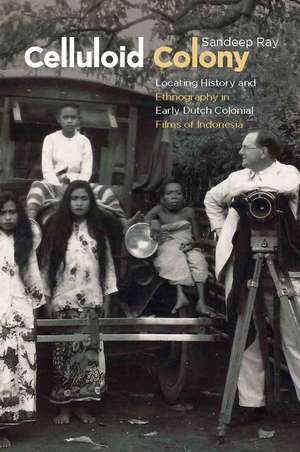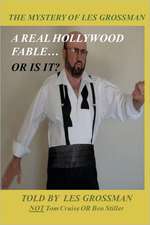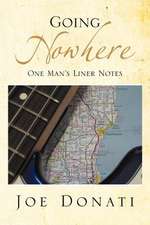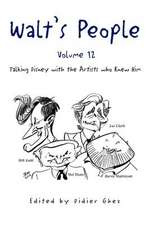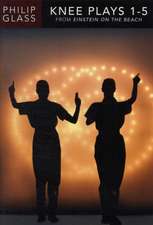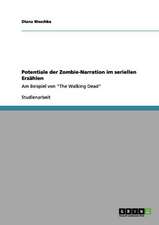Celluloid Colony: Locating History and Ethnography in Early Dutch Colonial Films of Indonesia
Autor Sandeep Rayen Limba Engleză Paperback – 20 mai 2021
Preț: 257.81 lei
Nou
Puncte Express: 387
Preț estimativ în valută:
49.34€ • 51.22$ • 41.14£
49.34€ • 51.22$ • 41.14£
Carte disponibilă
Livrare economică 03-17 martie
Livrare express 14-20 februarie pentru 24.10 lei
Preluare comenzi: 021 569.72.76
Specificații
ISBN-13: 9789813251380
ISBN-10: 9813251387
Pagini: 288
Ilustrații: 47 halftones
Dimensiuni: 152 x 229 x 15 mm
Greutate: 0.37 kg
Editura: Nus Press Pte Ltd
Colecția National University of Singapore Press
ISBN-10: 9813251387
Pagini: 288
Ilustrații: 47 halftones
Dimensiuni: 152 x 229 x 15 mm
Greutate: 0.37 kg
Editura: Nus Press Pte Ltd
Colecția National University of Singapore Press
Notă biografică
Sandeep Ray is a filmmaker and a historian of Southeast Asia and is senior lecturer at the Singapore University of Technology and Design.
Recenzii
“[The book] is very organized, well researched, and has a strong thesis…. It should have a strong audience for those interested in Asian studies, colonial studies, early cinema, and may serve also serve as an essential book for researchers and scholars on how to incorporate visual texts (films) into the larger body of historical work, as well as what to look for, and how to write about, regarding these important celluloid films.”
“Well-written and extensively researched, Celluloid Colony offers a compelling case for non-fiction film as a bona fide historical source. . . A must-read for anyone with an interest in Dutch colonialism in Indonesia, visual ethnography, or propaganda film history.”
“It is always rewarding when a book on a Southeast Asian topic offers material that can shake up established disciplines and knowledge. Sandeep Ray’s book Celluloid Colony does just that. . . Raising new possibilities for scholarship and gaining new insights into colonial modernity, this is a pathbreaking book that will illuminate and refine prevalent views on the Dutch colonial project.”
“The book’s merit is that it gives meaning to the vast collection of early colonial films, which could easily be regarded as merely representing the colonial mentality of the day.”
“The author, who is also a novelist, has a succinct and accessible writing style, with the potential to attract an audience beyond academics. . . . Celluloid Colony is a valuable and welcome contribution to the fields of ethnography, anthropology, colonial history, colonial cinema, and documentary film.”
“Sandeep Ray’s work provides a prime example of how archival materials can be leveraged to delve into the complexities of colonialism in Indonesia… By highlighting the colonial films of South East Asia, this book makes a substantial contribution to the field of South East Asian studies. It presents novel opportunities for scholars to explore the complex history of the region, including frequently disputed colonial encounters, without simply advocating for a particular political stance. The utilization of archival materials and the imaginative handling of such materials offer a unique viewpoint on the history of documentary film and its capacity to enrich our comprehension of colonialism and its legacies.”
“[Ray’s period of focus] ranges from the earliest films made in 1912 until 1930 and covers Colonial Institute, corporate, and religious films in the three substantive middle chapters. This is a signal achievement, for the gap it begins to fill is vast, there being no comparable work about Indonesia on film in this period…. The book's clarity and brevity make it a good text for documentary film or archive courses, or in tandem with other materials for teaching the Indonesian road to independence. Use in the classroom is facilitated by the fact that many of the materials analyzed by Ray are now available on the YouTube channels of Eye Filmmuseum and the Netherlands Institute of Sound and Vision (Nederlands Instituut voor Beeld & Geluid). Ray admirably completes the important task, as Karen Strassler has done for photography or Matthew Isaac Cohen for theater, of providing an analytical survey of how one genre sheds light on the not-so-far-distant late colonial past.”
“Author Sandeep Ray, a historian, scholar, visual artist, and creative writer, has an incredibly good command of his prose and is a systematic thinker and writer…. Even for readers not interested in film history or the aesthetics of colonial cinema, Celluloid Colony is remarkable for its scope and ambition. It is not often that we come across a project that not only challenges our preconceived notions about colonial representations but also asks us not to 'fixate on the wretchedness of colonialism' (196). Ray’s book invites us to let this film archive speak for itself—to let the films '[lead] us to sites of memories and legacies that can only add to our knowledge of the past' (196). Celluloid Colony thoroughly initiates a much-needed, if difficult, conversation.”
